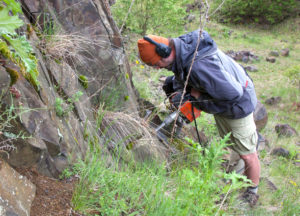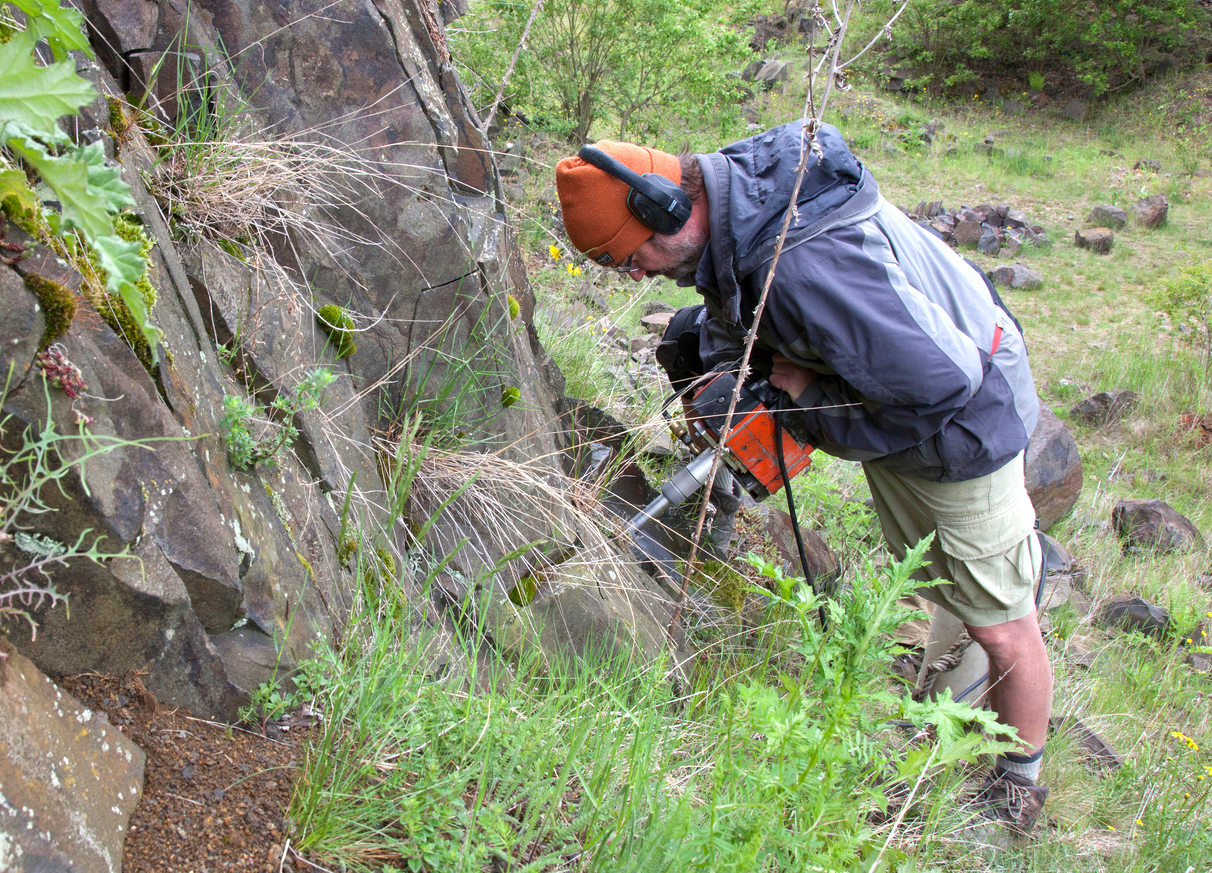
Highlands geology professor Michael Petronis, working in the Czech Republic in 2019, drills into basaltic lava flow for samples to analyze in the university’s state-of-the-art paleomagnetic-rock magnetic laboratory.
Photo: Jacob Erickson/Media Arts & Technology
August 13, 2019
Las Vegas, New Mexico – New Mexico Highlands University has a teaching and research facility unmatched in New Mexico and surrounding states, thanks to more than $1.1 million in instrument grants since 2008 from the National Science Foundation (NSF).
The latest $153,915 NSF grant adds a vibrating sample magnetometer to Highlands University’s state-of-the-art paleomagnetic-rock magnetic laboratory.
“This exciting new equipment provides an innovative tool to conduct sensitive experiments in geology, chemistry, physics, biology, archaeology, material science and art,” said Highlands geology professor and laboratory director Michael Petronis. “Collectively, the paleomagnetic-rock magnetic laboratory offers facilities that give our students the opportunity to conduct transformative research across many science disciplines, and even the arts.”
Petronis wrote a number of the National Science Foundation grants to fund the lab equipment alone and co-authored others with fellow Highlands geology professor Jennifer Lindline.
Petronis said paleomagnetism studies the history of the earth’s magnetic fields recorded in rocks, but another important application concerns pressing environmental issues like climate change.
“The new instrument will allow us to advance paleoclimate research – spanning the past two million years to the present – by documenting changes in the amount of magnetic material in glacial lake sediments. Another example is water quality research aimed at understanding the natural and human-made water chemistry of the Gallinas River watershed in the Las Vegas area,” Petronis said.
Regarding art, Petronis said that the new vibrating sample magnetometer provides a predictive tool to determine the color of pottery glazes prior to firing.
“This new instrument is capable of measuring a variety of natural magnets, such as rocks, sediments and metals, as well as nano-crystalline alloys and metal organic molecules used in medical research for drug delivery systems,” Petronis said.
Petronis said the paleomagnetic lab puts Highlands’ research facilities on par with Tier I research institutions like Cal Tech, MIT, Yale and Berkeley.
He said Highlands is offering its students world-class research opportunities in the paleomagnetic lab that help prepare them for advanced academic studies and high-paying careers in the science fields.
“The research our Highlands students conduct is transformative in their development as scientists. It has also helped many of them land positions with employers like Los Alamos National Laboratory, NASA, the Office of the State Engineer, and environmental consulting firms,” Petronis said.
Petronis said another benefit of Highlands University’s paleomagnetic research capacity is the national and international research collaboration it fosters, which raises the profile of Highlands in the global geologic research community.
“We are already collaborating on research projects with more than 10 universities, in five countries, involving more than 20 faculty and their students,” Petronis said, adding, “With this new instrument, students and researchers from abroad will either work in the lab or send samples for analysis, generating income for the lab.”
Since 2009, Petronis’ and Lindline’s students have used the paleomagnetic lab for more than 43 research studies published in scholarly journals such as the Journal of Geophysical Research, Nature and Bulletin of Volcanology. Their students were lead authors on 22 of these studies.

